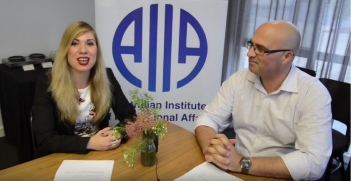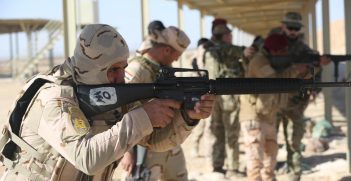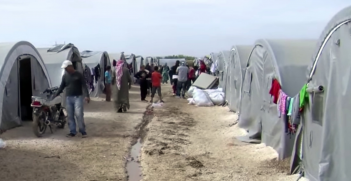Log-jam in Syria
After ten years of conflict, Syria presents a log-jam of competing forces that seem impossible to pull apart in the search for a solution. While all parties profess they must keep trying for their optimal solutions, some may be showing signs of fatigue.
Russia’s pact with Syria goes back to the Brezhnev era, when Moscow had difficulty grasping what was happening in Damascus under the firm hand of Hafez al-Assad, whose frequent visits to Moscow served only to intensify the perplexity. Thirty years later, Russia may have overlooked the lessons of 1980s Afghanistan in coming to the younger Assad’s aid in September 2015. It may again be wondering who really benefits from this Faustian pact, with Bashar al-Assad having absorbed the father’s skills in evading Moscow’s expectations. Russia may have hoped that by hosting the Astana reconciliation process in 2017 —two years after having put its own forces on the ground to prop up the foundering Syrian war effort—it could complete the rescue of the Syrian state. Today’s Assad, however, sees little need to make concessions, behaving as if he were in control of a real state with its territory and armed forces intact. That worked with Brezhnev, but will it still do the trick with Putin?
Iran also finds itself in an uncomfortable position in Syria. While the Revolutionary Guards call the tune in Iran’s involvement in Syria, there must be many back home who resent the lives lost in propping up a Syrian army not up to the job. It hurts in economic terms to extend a credit line to Syria to cover the supply of oil in the face of the crippling US and EU sanctions. In addition, Iran’s spending on support to militia groups and aid to stop the Syrian pound from collapsing sap Iran’s capacity to keep its own economy above water. While no economic factor is alone likely to end Iran’s support for Assad, the cumulative burden makes it increasingly difficult to bear the economic cost.
Turkey is the most baffling player in the Syria game, with President Recep Tayyip Erdogan changing strategy several times. Before 2011, the Turkish president cultivated a close relationship with the young Assad. Soon, however, Turkey was controlling the flow of funds and personnel across the border to boost the Syrian opposition. When the Kurds emerged as the most proficient of the non-Islamist forces, Erdogan reacted by clamping down on the Kurds in southeastern Turkey, fearing the emergence of a US-backed armed Kurdish presence across much of northern Syria. While Turkey has set up measures resembling a “Turkification” process across northern Syria, Turkey’s long-term aspirations remain an enigma within an enigma.
The lack of consistent or realistic policies among the Gulf states has been a seriously underestimated factor in stoking the early days of the conflict. They shared no common outlook on the Syrian conflict, while Islamist elements privately began to support the less savoury groups among the rebels. Doing so greatly assisted the Islamists’ capacity to shove secular opponents of the regime out of the way, and the so-called civil war increasingly took on the dimensions of a Salafist commitment to take Syria back to a mythical Islamic dark age. By mid-2015, the massive increase in Islamist firepower had brought the situation to a point where collapse of the Syrian state appeared an imminent prospect, triggering the Russian intervention. In 2018, the UAE began pulling back from this disastrous enflaming of the conflict, but the damage had been done.
The United States, of all the players, has most conspicuously lacked sufficient know-how in this game. It misjudged the risk of the transformation of the Syrian uprising into a predominantly Salafist challenge fed by outside powers. With the rise of IS, a more identifiable target emerged, and US firepower entered the theatre. Three years after the elimination of IS as a coherent force, however, the US gets nothing from its present token deployment. If US thinking seems somewhat vague and undirected, the US Special Representative for Syria, James Jeffrey, provided a telling clue: “My job is to make (Syria) a quagmire for the Russians.”
The US under Donald Trump ignored the risks of overreach by identifying Syria as a new front against Iran. The prospect now of Joe Biden reassessing Trump’s uncritical support for an aggressively anti-Iran front by the Gulf states might suggest a return to a more nuanced approach in handling Iran, now perhaps reflected in the recent visit of the Saudi head of intelligence to Damascus. The residual US force is too small to be meaningful, while the endless wars fatigue is a growing factor back home. Moreover, the US lacks any realisable endgame beyond the unfortunate conjuring of an Afghan quagmire or the illusion of a stake at a reconciliation table.
The Syrian rebels are now reduced to a factional presence by an al-Qaeda offshoot bottled up in part of Idlib province in Syria’s northwest. Their support from Turkey is now hampered by the Russian-sponsored control lines separating rebels and Turkish occupation forces. This remains the last refuge for illusions that outsiders are going to come to their rescue or helicopter in an Islamist-based state. The only factor standing in the way of a final Syrian government assault on the enclave is Russia’s apparent undertaking to Erdogan that there must be no renewed outflow of Syrian refugees into Turkey.
Is IS still a factor? It is no longer a force controlling defined territory, but it seems likely to remain a fragmented presence in the remote areas of the Syrian steppe with a capacity to carry out small-scale mayhem directed at civilians and small contingents of Syrian forces.
Western states, led by Washington as early as August 2011, called for Assad’s removal as the essential for any resolution of the conflict. This rhetoric, however, left two questions unresolved: what to do when he doesn’t go; or worse still, what to do when the rebel movement morphs into your worst enemy? The morally defensible demand isn’t always the key to an optimal solution. Encouraging the illusion of an outcome that is unworkable has left stranded many of the suffering Syrians at home and abroad who found encouragement in the weight of a moral commitment without substance. An endgame based on sanctions can be an excellent weapon if constantly finetuned and reassessed. It can be a disaster if the prolific range of poorly directed measures play into the hands of a leadership happy to let their lackeys profit through their control of non-conventional channels.
After ten years, the world has largely forgotten Syria. However, keeping the conflict out of the media may be a good thing. The need to play to the Western media in the first five years of this tragic decade led governments to raise expectations that were never likely to be fulfilled. The need is now for a new paradigm, but too many players remain attached to their failed slogans.
Syria needs to become a state again, with restored unity and sovereignty (not borders which operate like a merry-go-round), not a collection of ethnic statelets with bickering foreign patrons. Repatriation and reconstruction are an essential part of the state’s restoration. Syrians have the know-how, commitment, and motivation to do most of the reconstruction themselves, but they cannot break the logjam from within.
Ross Burns was Australian Ambassador in Syria in the mid-1980s and since retirement in 2013 from DFAT has written several volumes on the history and archaeology of Syria.
This article is published under a Creative Commons License and may be republished with attribution.





